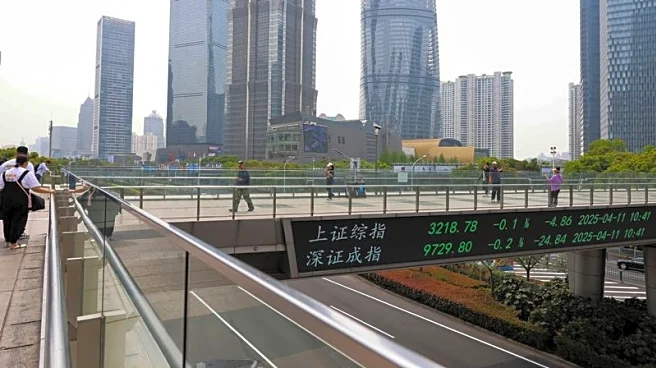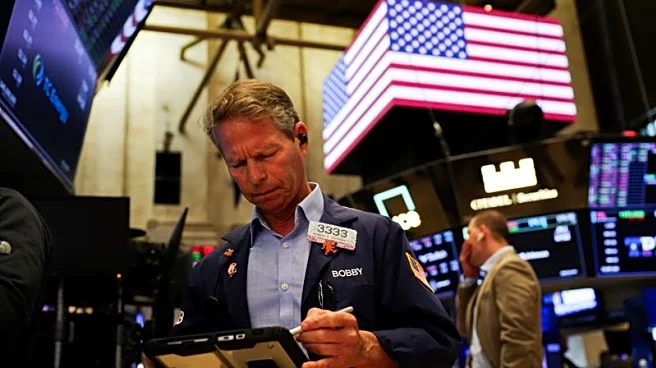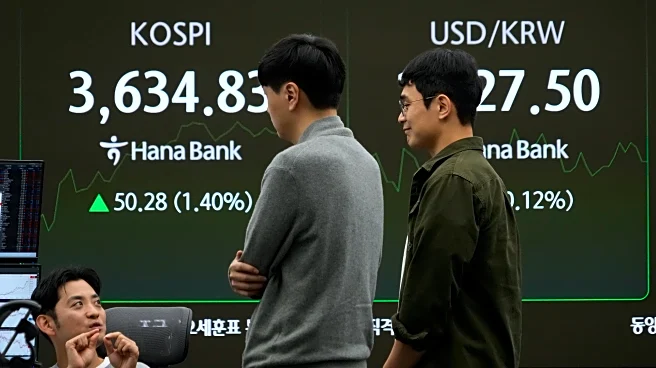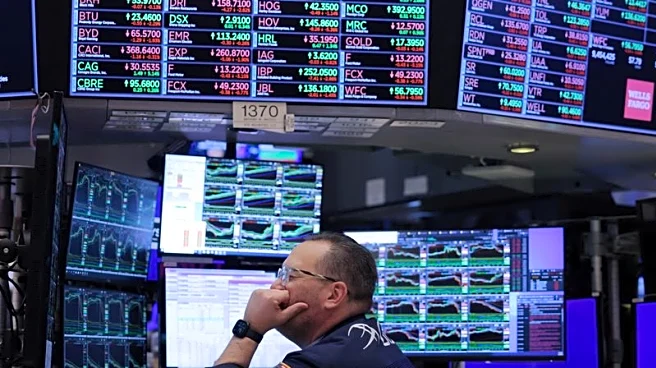What is the story about?
What's Happening?
The S&P 500 experienced a notable rebound after a heavy start, executing a precise retest of Friday's low. Tactical buyers took control, countering the market's recent volatility driven by trade-policy threats between the U.S. and China. The rally was fueled by capital influx into AI infrastructure and expectations of Federal Reserve rate cuts. Despite the positive movement, the market remains sensitive to unresolved tariff regimes and potential government shutdowns, which could pressure the consumer economy. The S&P 500's recent performance has been characterized by speculative investments in sectors like quantum computing and drone technology, which have shown strong growth despite lacking core fundamentals.
Why It's Important?
The S&P 500's rebound highlights the market's resilience amid geopolitical tensions and economic uncertainties. The influx of capital into speculative sectors suggests a shift in investor focus towards high-risk, high-reward opportunities. This trend could lead to increased market volatility and sharper price fluctuations. The Federal Reserve's potential rate cuts and balance sheet adjustments are critical for sustaining economic growth, but unresolved trade issues and government fiscal challenges pose risks. Investors and policymakers must navigate these complexities to maintain market stability and economic momentum.
What's Next?
The market's future trajectory will depend on several factors, including the resolution of trade tensions between the U.S. and China and the Federal Reserve's monetary policy decisions. Stakeholders will closely monitor economic indicators and corporate earnings reports to gauge the market's health. The speculative nature of recent investments may lead to further volatility, requiring investors to exercise caution. The potential for a government shutdown and its impact on consumer spending will also be a key area of focus.
Beyond the Headlines
The rise in speculative investments raises ethical and regulatory questions about market stability and investor protection. The lack of fundamental support for these sectors could lead to significant losses if market sentiment shifts. Additionally, the focus on AI and technology infrastructure reflects broader economic shifts towards digital transformation, which may have long-term implications for labor markets and industry dynamics.
AI Generated Content
Do you find this article useful?















